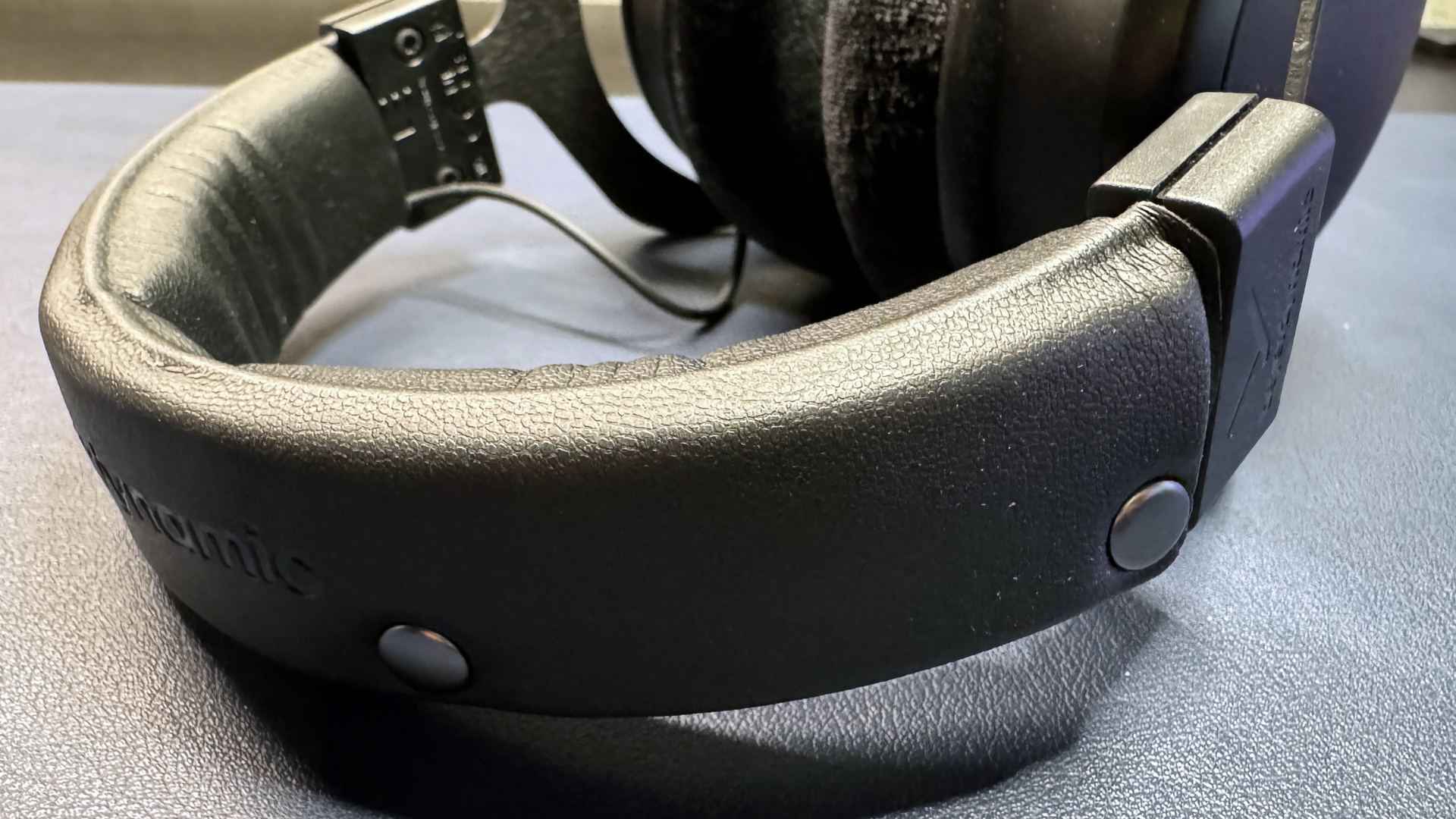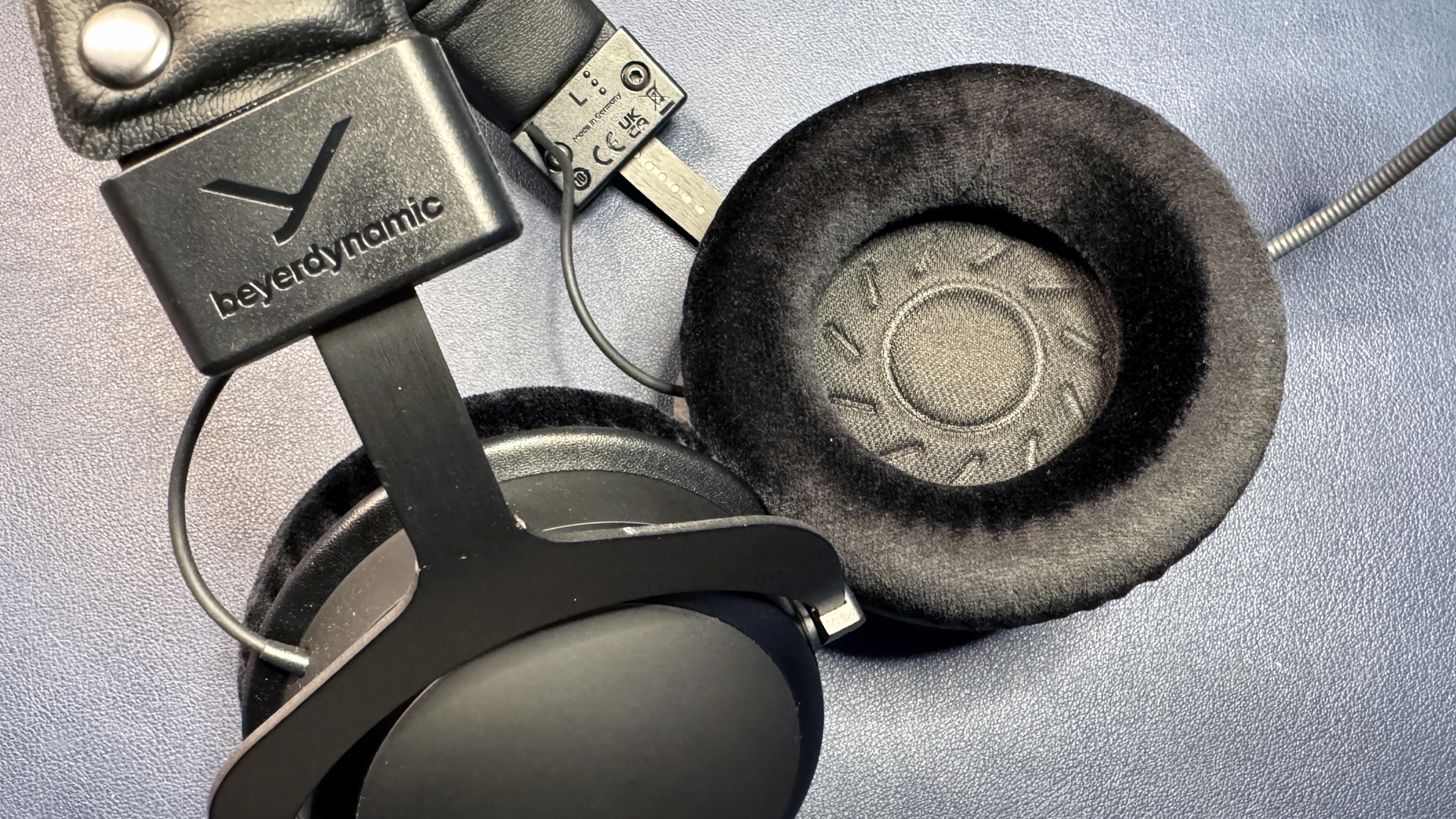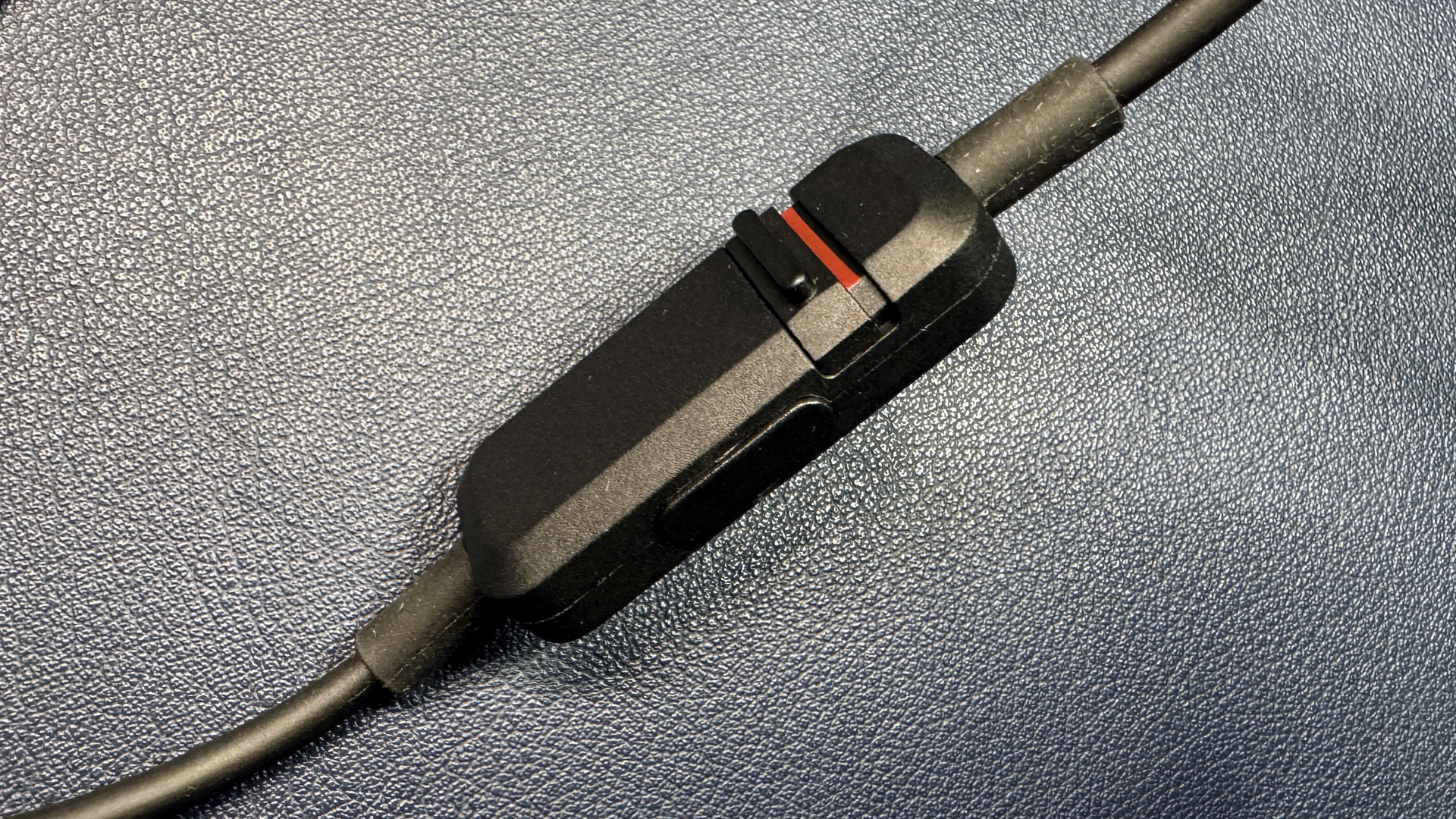Tom's Hardware Verdict
Beyerdynamic brings its studio-quality Stellar.45 drivers to the MMX 300 Pro and they sound great, but it needs to offer a little more for $300.
Pros
- +
Excellent audio
- +
Mic sounds good
- +
Easily replaceable parts
Cons
- -
Expensive
- -
Non-detachable, conspicuous mic
- -
Some of us did not find it comfortable
Why you can trust Tom's Hardware
The best gaming headsets are designed with audio in mind, but audio usually isn't the only factor — or even the most important one. Gamers aren't just looking for great sound, they're also looking for a great mic, a sturdy, comfortable frame, and built-in conveniences like wireless connectivity, virtual surround sound, or game-specific sound profiles. But when audio companies make gaming headsets, they tend to focus almost entirely on the sound, which usually makes for a great-sounding headset — but is it enough for a gaming headset?
Beyerdynamic's MMX 300 Pro is the newest headset in its gaming lineup, replacing the second-generation MMX 300, which was released six years ago. The MMX 300 Pro is the epitome of an audio company's gaming headset: it brings the brand's studio-quality Stellar.45 drivers to its gaming lineup. These are the same drivers you'll find in the company's DT 900 Pro X and DT 700 Pro X studio headphones. With the MMX 300 Pro, Beyerdynamic promises impressive audio that's tuned for gaming and accurate, dimensional sound, as well as hours of unparalleled comfort and easy-to-replace parts. But it doesn't come cheap — the MMX 300 Pro is available now for $300, which is pretty expensive for what seems like a pretty basic wired gaming headset.
Design and Comfort of the MMX 300 Pro
The MMX 300 Pro is a wired, closed-back over-ear (circumaural) gaming headset with a flexible spring steel frame. It comes with a long detachable cable with an inline remote that plugs into the left earcup and features a rotating non-detachable boom microphone with a cardioid polar pattern. It's a fairly simple, all-black headset, with a black leatherette-covered padded headband, black velour-covered padded earpads, metal forks, and large, round plastic earcups. Beyerdynamic's logo is printed all over it, from the top of the headband to the plastic hinge covers to the earcups.
It has a flexible steel headband and very sturdy metal forks that connect the plastic earcups. The earcups don't really swivel, but there's enough lateral movement to account for different head shapes. The headset feels sturdy and like it can withstand quite a bit of wear and tear without issue, but as it doesn't fold or come with a case (like its predecessor did), it's not a great pick for travel.




The MMX 300 Pro's steel headband is covered in a piece of padded leatherette, which is attached with snaps so it can be easily removed and replaced. The inside of the headband measures approximately 9 inches (228.6mm) long, and each fork extends the earcups an extra 1.25 inches (31.75mm) over a series of eight notches, for a total length of 11.5 inches (292.1mm). The padding is thick enough, and, in a nod to comfort, is recessed in the center to prevent the headband from putting too much pressure on the top of your skull.
Or, at least, that's what Beyerdynamic hopes — when I first tried this headset, I started to feel some pain near the top of my skull after I'd been wearing it for about an hour. I initially thought this might be because I'd somehow hit my head earlier and forgotten about it until the headset started putting pressure on the bruise — like any headset would (I don't normally wear headsets at home). However, after a couple of weeks of testing this headset and wearing other headsets alongside it, I've concluded that the pain is happening only with the MMX 300 Pro (and it's pretty consistently popping up around the one-hour mark).









The MMX 300 Pro weighs 11.08 ounces (314g) without its wire, which is on the lighter side. It's not quite as light as the Logitech G735 (9.6oz / 273g), but it is a little lighter than the HyperX Cloud III (11.29oz / 320g), which is, to date, the most comfortable headset I've ever worn. It's also nowhere near as heavy as the Audeze Maxwell (17.28oz / 490g), which is one of the headsets I wore while testing the MMX 300 Pro; the Maxwell didn't produce any pain after several hours, so it doesn't seem to be a weight issue.
Get Tom's Hardware's best news and in-depth reviews, straight to your inbox.
For what it's worth, the pain doesn't seem to be directly on the top of my skull (where the recess in padding is), but is instead right next to that (where the padding starts up again). I think it may have something to do with the slightly stronger clamping force of the MMX 300 Pro, which you'll feel more if you have a larger head. Comfort is, obviously, subjective, so you may not have the same experience with the MMX 300 Pro as I did, but it's something to consider while shopping.
The headset's large, round earcups have padded, velour-covered earpads, which are also easy to remove and replace (the theme of this headset is repairability). You don't see velour too often on gaming headsets, but it's more comfortable (in my opinion) and more breathable than leatherette or leather, and it does a pretty good job of passively keeping noise out. The earpads' padding is a little stiff and is on the thinner side in general, but I didn't have any issues with my ears pressing against the drivers.




The MMX 300 Pro comes with an 8.2-foot (2.5m) PC cable with two 3.5mm jacks for the audio and the mic, as well as a 3.5mm single plug adapter for consoles. The PC cable features an inline remote, which has a volume wheel, a mic mute switch, and a button for standard controls (play/pause, answer/hang up phone calls).
Specs
| Driver Type | Stellar.45 dynamic drivers |
| Impedance | 48Ω |
| Frequency Response | 5 - 40,000 Hz |
| Design Style | Over-ear (circumaural), closed back, wired |
| Microphone Type | Condenser - Back Electret, Cardioid |
| Connectivity | Wired |
| Weight | 11.08oz / 314g |
| Cord Length | 2.5m |
| Battery Life | N/A |
| Lighting | None |
| Software | None |
| MSRP / Price at Time of Review | $299.99 |
| Release Date | July 2, 2024 |
Audio Performance of the MMX 300 Pro
The MMX 300 Pro features Beyerdynamic's studio-quality Stellar.45 drivers, which have a frequency response range of 5 - 40,000 Hz and an impedance of 45 ohms. The frequency response range is much wider than you'll find on most gaming headsets, which normally stick to 20 - 20,000 Hz, but there are a few headsets that come close. Audeze's Maxwell and LCD-GX have a frequency response range of 10 - 50,000 Hz, while the wired version of SteelSeries' Arctis Nova Pro has a frequency response range of 10 - 40,000 Hz.
Music on the MMX 300 Pro sounds surprisingly good, considering the drivers are specifically tuned for gaming. The headset has a pretty balanced sound profile, with very flat mids and slightly turned-up lows and highs (I suppose that's the "tuned for gaming" aspect). The bass line in Lorde's “Royals” was just intense enough to be felt, but not so powerful as to overwhelm or lose any detail. The strings in Britney Spears' “Toxic” were very bright but stopped just shy of being painful. Songs with a lot of full-range detail, like Enya's Orinoco Flow, sounded especially good thanks to the headset's precisely layered, accurate sound.
According to Beyerdynamic, the MMX 300 Pro's Stellar.45 drivers are tuned for gaming. While the company doesn't elaborate too much on what this means, it says that "atmospheric music is emphasized in the depths" and that "in-game sound localization is accurate down to the smallest detail." The atmospheric music did sound good in Subnautica: Below Zero and God of War: Ragnarok, and the headset also did a good job of keeping the layered sounds of cities in games like The Elder Scrolls Online and Baldur's Gate 3 vibrant and full of detail.
The one place where the MMX 300 Pro falls a little short is soundstage, which is on the narrower side — music almost sounds like it's inside your head. This did make certain types of directional sound, like the immersive jump scares of Alien: Isolation, a little less impactful (though also a little more chaotic once you were in the fray). It wasn't too much of an issue with games in which directional sound is critical, however — the directional sound was accurate, just not distant. The headset is entirely analog and doesn't have any built-in virtual surround, nor does it come with software to replicate that.
Microphone of the MMX 300 Pro
The MMX 300 Pro has a non-detachable boom mic attached to its left earcup via a flexible metal gooseneck arm that measures around 7 inches (190mm) long. The mic has a 13mm condenser capsule with a unidirectional (cardioid) polar pattern and comes with a removable foam pop filter. There's a mic mute switch on the inline remote that displays red when the mic is muted.
The mic rotates up and out of the way for when you're not using it, but it's still very conspicuous when it's rotated up. If it were removable, like the mic on the Audeze Maxwell, or hidden in the earcup, like the mic on the SteelSeries Arctis Nova Pro, the MMX 300 Pro could double as a regular pair of headphones. However, because the mic is both permanently attached and very obvious, I probably wouldn't even recommend it for streamers using dedicated USB mics.
But if you're buying the MMX 300 Pro for the mic, performance is pretty good — definitely above average for a gaming headset, though I wouldn't go so far as to call it "broadcast quality." My voice sounded fuller and warmer on the MMX 300 Pro than it did on most mainstream gaming headsets (including the HyperX Cloud III, the Logitech G Pro X 2 Lightspeed, and the SteelSeries Arctis Nova Pro), but the difference wasn't so big that my friends and colleagues could tell without hearing them side by side.
The mic has a cardioid polar pattern, which means it only picks up sound from one direction. While this is not the same as software-based noise cancellation, it's implemented very well here. The mic didn't totally shut out background noise, but it reduced it enough that people were still able to hear me perfectly clearly, even when I was typing on my loud, clicky keyboard and my dogs were barking in the background.
The mic on the Razer BlackShark V2 Pro (2023) remains the best mic I've used on a headset, and also benefits from an EQ in Razer's Synapse app. The MMX 300 Pro doesn't come with any software — and while I'm generally not the biggest fan of peripheral software, an EQ for the headset's audio and mic would be useful.
Bottom Line
The Beyerdynamic MMX 300 Pro is a great-sounding headset with an above-average mic, but it's missing a lot of the extras and conveniences you'll find on other gaming headsets. I also didn't find it to be very comfortable, but because comfort is subjective, that doesn't factor quite as much into the overall score — it does feel sturdily built and it's pretty lightweight, though the clamping force is a bit too strong even if you don't have the same top-of-the-head pain as I did.
The MMX 300 Pro's audiophile-quality sound definitely makes it worth considering, but for $300 you can also pick up the Audeze Maxwell. The Maxwell has a slightly better listening sound profile, but the MMX 300 Pro sounded better with games. Of course, the Maxwell is also wireless, while the MMX 300 Pro is wired and only comes with one 8.2-foot long cable, which is a little disappointing considering the second-gen MMX 300 also came with a shorter 3.9-foot cable for consoles and/or anything else where you might not want a mile of cable between you and your source. (The MMX 300 also came with a sturdy case and a 6.35mm jack adapter — the MMX 300 Pro comes with neither.)
Beyerdynamic's Stellar.45 drivers are in its DT 900 Pro X and DT 700 Pro X studio headphones, both of which are currently selling for $270 (MSRP: $350), so it doesn't really feel like you need to spend $300 on the MMX 300 Pro.
MORE: Best Gaming Keyboards
MORE: How to Pick Keycaps for Your Mechanical Keyboard
MORE: How to Build a Custom Mechanical Keyboard

Sarah Jacobsson Purewal is a senior editor at Tom's Hardware covering peripherals, software, and custom builds. You can find more of her work in PCWorld, Macworld, TechHive, CNET, Gizmodo, Tom's Guide, PC Gamer, Men's Health, Men's Fitness, SHAPE, Cosmopolitan, and just about everywhere else.

